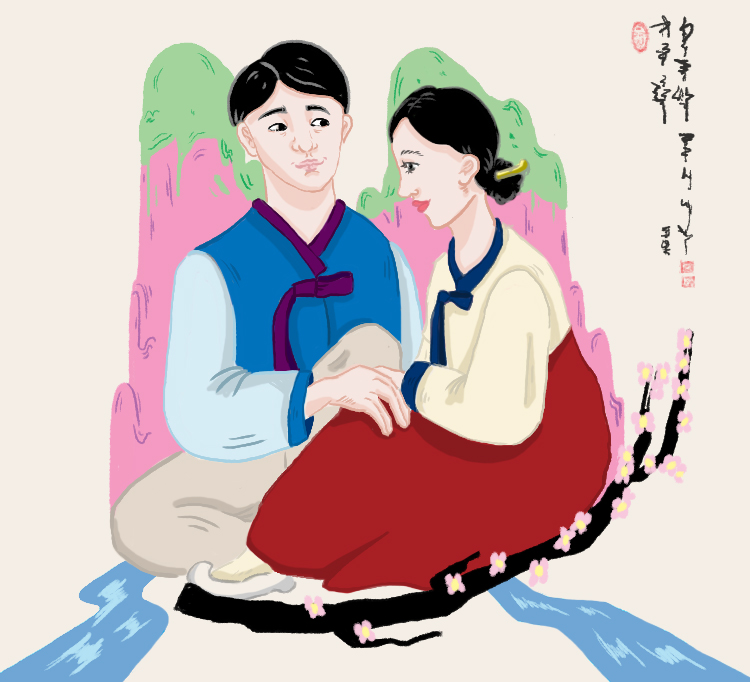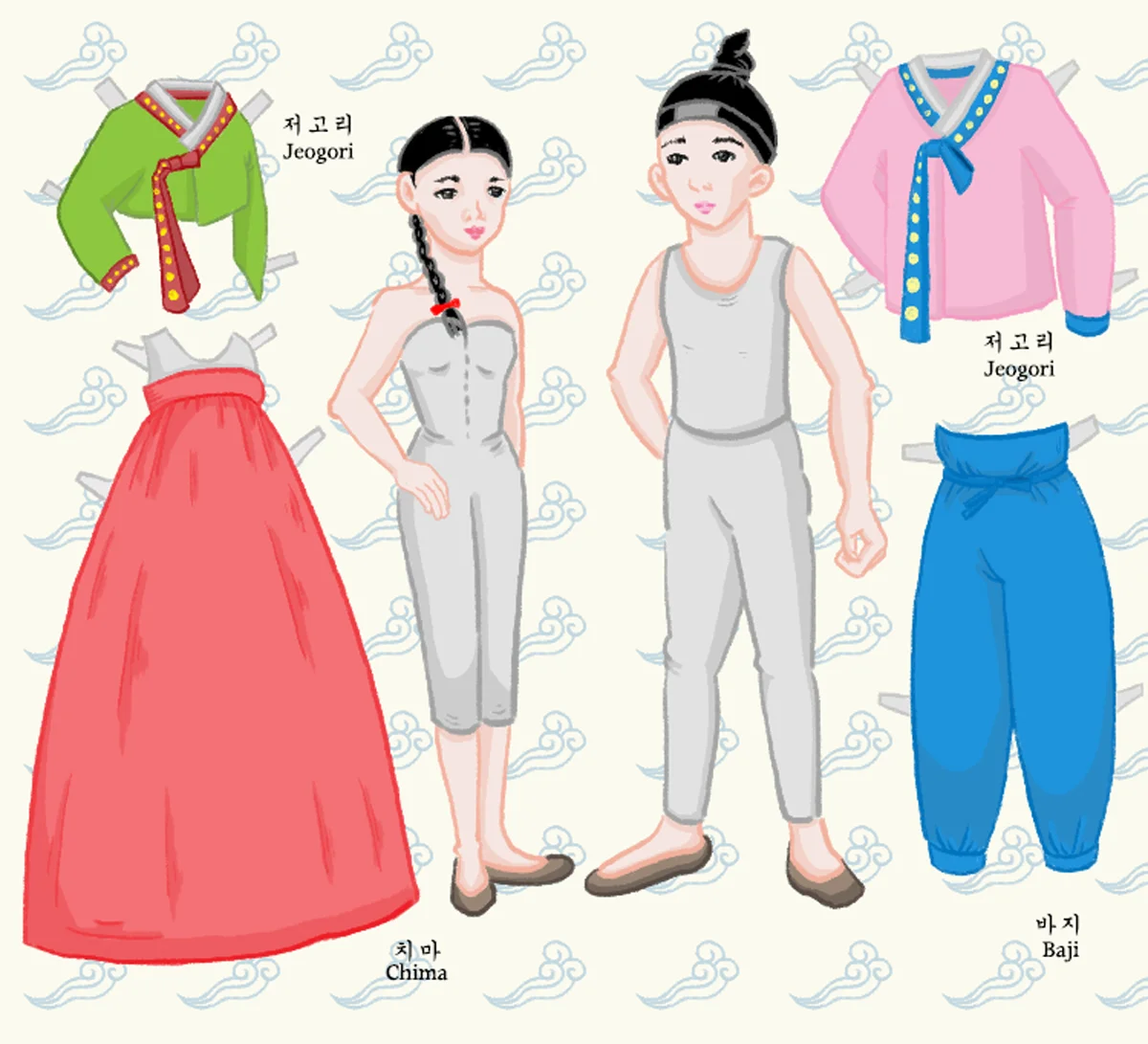A Brief History: Korean Hanbok
Before their fashion was completely westernized, Koreans wore the traditional hanbok on a day-to-day basis. In this article, we’ll discuss the deep history of this beautiful garment as well as the recent revival of the hanbok that transcends the streets of Seoul.
Words Chaereen Pak, Art Subin Hwang
The Foundation of Korean Fashion
The word 한복 hanbok itself actually means “Korean clothing”. It consists of two main pieces. On the upper body, both men and women wear a jacket called the 저고리 jeogori. For the bottom, women wear a long, billowing skirt called the 치마 chima, while men slip into wide, roomy pants called the 바지 baji. The hanbok is known to be very comfortable; its baggy silhouette provides ease of movement, influenced by the nomadic tendencies of Koreans back in the day. The origins of the hanbok can be traced back to the Goguryeo Dynasty, one of the Three Ancient Kingdoms of Korea.
Although the basic design of the hanbok has been barely altered, little changes have been made here and there depending on different cultural impacts. For example, due to the influence of Mongolian fashion during the reign of the Mongol Empire in the 13th century, the jeogori for women was cropped shorter above the waist. During the Joseon Dynasty, social class distinctions were evident in hanbok styles. While commoners were strictly limited to using only cotton and the color white for their garments, royals lavished in silks and vibrant hues of the rainbow.
Young women strolling down the roads of Gangnam in modernized versions of the hanbok.
The Modern Hanbok
As you may know, Koreans do not wear the hanbok as everyday clothing anymore. It is usually reserved for formal occasions, such as weddings and New Year’s Day. However, the traditional outfit is recently making a comeback: these days young couples are showing up to Jeonju Hanok Village and Gyeongbokgung Palace to take part in the popular hanbok tours. Modernized designs of the hanbok are also springing up in street-style as you’ll see young women wearing sets that exhibit even brighter colors and include quirky details such as moons and stars on the hems of their jeogori and chima.
A notable modern hanbok label is Sonjjang Hanbok. By integrating contemporary fabrics such as denim and gingham, designer Dew Hwang emphasizes the idea that hanbok can be worn on a casual, comfortable basis. Korean designers are not the only ones finding inspiration in the folk garment. For the 2011 Spring/Summer season Dior unveiled a breathtaking empire-waist gown inspired by the hanbok silhouette at Paris Fashion Week. Moreover, Karl Lagerfeld celebrated the hanbok and its decorative elements for the 2016 Chanel Cruise Collection show hosted in Seoul.
As hanbok for women has been making an eye-catching comeback in Seoul and gaining recognition internationally, we hope to see a comparable revival in men’s hanbok follow suit. Nevertheless, the presence of the hanbok in its many forms today reminds us of the beauty and value of this one special garment.


